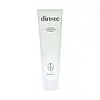What's inside
What's inside
 Key Ingredients
Key Ingredients

 Benefits
Benefits

 Concerns
Concerns

 Ingredients Side-by-side
Ingredients Side-by-side

Water
Skin ConditioningGlycerin
HumectantSodium Cocoyl Glycinate
CleansingSodium Lauroyl Glutamate
Hydrated Silica
AbrasiveDisodium Cocoamphodiacetate
Cleansing1,2-Hexanediol
Skin ConditioningFicus Carica Fruit Extract
HumectantCentella Asiatica Extract
CleansingSaussurea Involucrata Extract
HumectantHydrogenated Lecithin
EmulsifyingSodium Hyaluronate
HumectantLauryl Betaine
CleansingSodium Chloride
MaskingAcrylates/C10-30 Alkyl Acrylate Crosspolymer
Emulsion StabilisingHydroxyacetophenone
AntioxidantEthylhexylglycerin
Skin ConditioningSodium Polyacrylate
AbsorbentButylene Glycol
HumectantHexylene Glycol
EmulsifyingBeta-Glucan
Skin ConditioningCeramide NP
Skin ConditioningTocopherol
AntioxidantDimethylsilanol Hyaluronate
HumectantHydrolyzed Sodium Hyaluronate
Skin ConditioningHydrolyzed Hyaluronic Acid
HumectantPotassium Hyaluronate
Skin ConditioningHyaluronic Acid
HumectantSodium Hyaluronate Crosspolymer
HumectantHydroxypropyltrimonium Hyaluronate
Sodium Hyaluronate Dimethylsilanol
HumectantSodium Acetylated Hyaluronate
HumectantParfum
MaskingWater, Glycerin, Sodium Cocoyl Glycinate, Sodium Lauroyl Glutamate, Hydrated Silica, Disodium Cocoamphodiacetate, 1,2-Hexanediol, Ficus Carica Fruit Extract, Centella Asiatica Extract, Saussurea Involucrata Extract, Hydrogenated Lecithin, Sodium Hyaluronate, Lauryl Betaine, Sodium Chloride, Acrylates/C10-30 Alkyl Acrylate Crosspolymer, Hydroxyacetophenone, Ethylhexylglycerin, Sodium Polyacrylate, Butylene Glycol, Hexylene Glycol, Beta-Glucan, Ceramide NP, Tocopherol, Dimethylsilanol Hyaluronate, Hydrolyzed Sodium Hyaluronate, Hydrolyzed Hyaluronic Acid, Potassium Hyaluronate, Hyaluronic Acid, Sodium Hyaluronate Crosspolymer, Hydroxypropyltrimonium Hyaluronate, Sodium Hyaluronate Dimethylsilanol, Sodium Acetylated Hyaluronate, Parfum
Water
Skin ConditioningGlycerin
HumectantMyristic Acid
CleansingPotassium Hydroxide
BufferingLauric Acid
CleansingLaureth-7
EmulsifyingPalmitic Acid
EmollientGlycol Distearate
EmollientGlycol Stearate
EmollientPEG-8
HumectantSodium Methyl Stearoyl Taurate
CleansingSorbitan Olivate
EmulsifyingButylene Glycol
HumectantPanax Notoginseng Root Extract
HumectantParfum
MaskingTocopheryl Acetate
AntioxidantDisodium EDTA
Hydroxyethylcellulose
Emulsion StabilisingMalpighia Glabra Fruit Extract
Skin ConditioningAspalathus Linearis Leaf Extract
Skin ConditioningCI 14700
Cosmetic ColorantWater, Glycerin, Myristic Acid, Potassium Hydroxide, Lauric Acid, Laureth-7, Palmitic Acid, Glycol Distearate, Glycol Stearate, PEG-8, Sodium Methyl Stearoyl Taurate, Sorbitan Olivate, Butylene Glycol, Panax Notoginseng Root Extract, Parfum, Tocopheryl Acetate, Disodium EDTA, Hydroxyethylcellulose, Malpighia Glabra Fruit Extract, Aspalathus Linearis Leaf Extract, CI 14700
 Reviews
Reviews

Ingredients Explained
These ingredients are found in both products.
Ingredients higher up in an ingredient list are typically present in a larger amount.
Butylene Glycol (or BG) is used within cosmetic products for a few different reasons:
Overall, Butylene Glycol is a safe and well-rounded ingredient that works well with other ingredients.
Though this ingredient works well with most skin types, some people with sensitive skin may experience a reaction such as allergic rashes, closed comedones, or itchiness.
Learn more about Butylene GlycolGlycerin is already naturally found in your skin. It helps moisturize and protect your skin.
A study from 2016 found glycerin to be more effective as a humectant than AHAs and hyaluronic acid.
As a humectant, it helps the skin stay hydrated by pulling moisture to your skin. The low molecular weight of glycerin allows it to pull moisture into the deeper layers of your skin.
Hydrated skin improves your skin barrier; Your skin barrier helps protect against irritants and bacteria.
Glycerin has also been found to have antimicrobial and antiviral properties. Due to these properties, glycerin is often used in wound and burn treatments.
In cosmetics, glycerin is usually derived from plants such as soybean or palm. However, it can also be sourced from animals, such as tallow or animal fat.
This ingredient is organic, colorless, odorless, and non-toxic.
Glycerin is the name for this ingredient in American English. British English uses Glycerol/Glycerine.
Learn more about GlycerinParfum is a catch-all term for an ingredient or more that is used to give a scent to products.
Also called "fragrance", this ingredient can be a blend of hundreds of chemicals or plant oils. This means every product with "fragrance" or "parfum" in the ingredients list is a different mixture.
For instance, Habanolide is a proprietary trade name for a specific aroma chemical. When used as a fragrance ingredient in cosmetics, most aroma chemicals fall under the broad labeling category of “FRAGRANCE” or “PARFUM” according to EU and US regulations.
The term 'parfum' or 'fragrance' is not regulated in many countries. In many cases, it is up to the brand to define this term.
For instance, many brands choose to label themselves as "fragrance-free" because they are not using synthetic fragrances. However, their products may still contain ingredients such as essential oils that are considered a fragrance by INCI standards.
One example is Calendula flower extract. Calendula is an essential oil that still imparts a scent or 'fragrance'.
Depending on the blend, the ingredients in the mixture can cause allergies and sensitivities on the skin. Some ingredients that are known EU allergens include linalool and citronellol.
Parfum can also be used to mask or cover an unpleasant scent.
The bottom line is: not all fragrances/parfum/ingredients are created equally. If you are worried about fragrances, we recommend taking a closer look at an ingredient. And of course, we always recommend speaking with a professional.
Learn more about ParfumWater. It's the most common cosmetic ingredient of all. You'll usually see it at the top of ingredient lists, meaning that it makes up the largest part of the product.
So why is it so popular? Water most often acts as a solvent - this means that it helps dissolve other ingredients into the formulation.
You'll also recognize water as that liquid we all need to stay alive. If you see this, drink a glass of water. Stay hydrated!
Learn more about Water